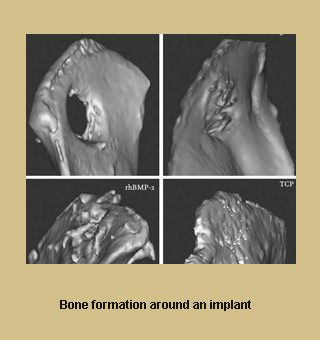
Particles of ceramic called calcium phosphate may be able to stimulate bone regrowth. The ceramic is possibly capable of attracting stem cells and ‘growth factors’ to improve healing and the integration of the grafted tissue. Natural bone grafts were examined against ceramic particles with different structural and chemical properties. The investigators noted that micro-porous ceramic particles with calcium phosphate encouraged stem cells to develop into bone cells in the test tube. The ceramic particles were seemingly capable of stimulating bone growth in live tissue of mice, dogs and sheep.
Professor Joost de Bruijn from the School of Engineering and Materials Science at Queen Mary, University of London elucidated, “The rate of bone repair we see with these materials rivals that of traditional grafts using a patients’ own bone. And what sets it apart from other synthetic graft substitutes is its ability to attract stem cells and the body’s natural growth factors, which coincide to form new, strong, natural bone around an artificial graft.”
Implants constructed from the animals’ own bone healed similarly to bone injuries filled with the ceramic particles. The newly developed material seems to have artificial growth factors. Its only side-effect is that bone causing fragments may develop in nearby soft tissue, like a muscle. The scientists are possibly unaware about the mechanism leading to bone growth in the synthetic implants till date.
But it was ascertained that variations in the ceramic material’s chemistry, micro-porosity, micro-structure, and degradation boost the graft’s performance. According to the researchers, biomaterials-based bone grafts can employ cell behavior for repairing injury. It is anticipated that such biomaterials-based bone grafts will be utilized in future to repair bone injuries in humans.
The research is published in the journal Proceedings of the National Academy of Sciences.
